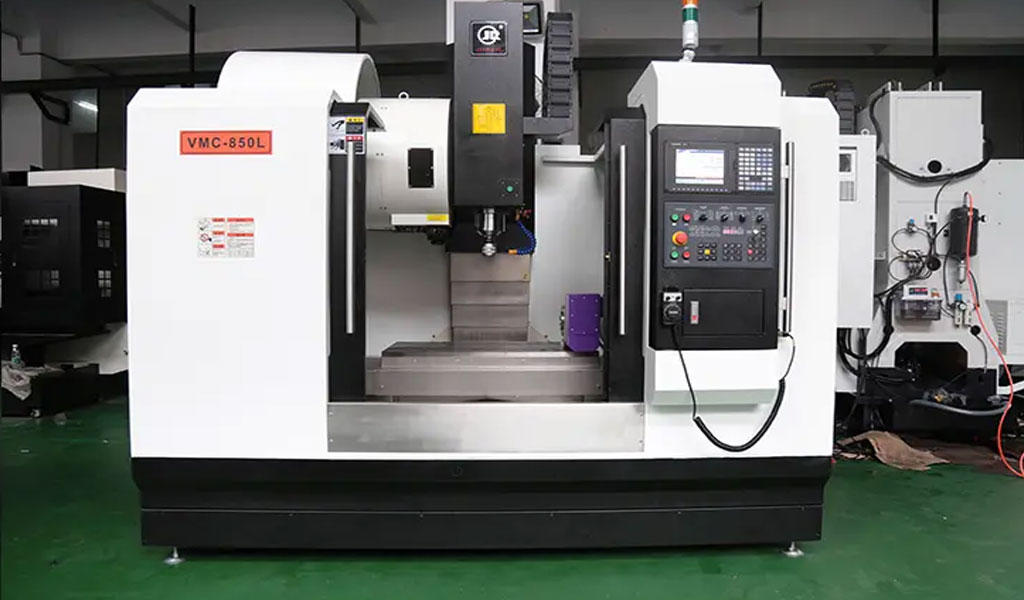The Classification by process use
- Metal cutting class CNC machine tools: respectively, CNC lathes, CNC milling machines, CNC grinding machines, CNC boring machines and machining centres. These machine tools are digital control of movement and motion, with a high degree of productivity and automation, especially the machining centre, which is a kind of automatic tool-changing device, can be milling, drilling, boring processing of composite CNC machine tools. Machining centres are also divided into turning centres, grinding centres, etc. Also realized in the machining centre to increase the exchange table and the use of spindle or table for vertical, horizontal conversion of the five-sided machining centre.
- Metal forming and special processing classes of CNC machine tools: it refers to metal cutting class other than CNC machine tools. CNC pipe bender, CNC wire cutting machine tools, CNC EDM machine tools and so on are this type of CNC machine tools.
According to the movement classification
- Positioning control CNC machine tools: it refers to the precise positioning control system to control the tool relative to the workpiece, and in the process of relative movement can not be any processing. Through the use of graded or continuous speed reduction, low speed convergence to the target point, to reduce the inertia of the moving parts overshoot caused by positioning errors.
- Linear motion control CNC machine tools: it refers to the control of the machine table or tool to the required feed rate, along a coordinate axis or two axes parallel to the direction of linear or diagonal movement and cutting processing machine tools. This type of CNC machine tools to require accurate positioning functions and control the speed of displacement, but also to even the tool radius and length of the compensation function and the spindle speed control function. Modern combination machine tools are also considered a linear motion control CNC machine tools.
- Contour control of CNC machine tools: it refers to the ability to achieve two axes or more than two axes of linkage processing, and the displacement and speed of each coordinate for strict uninterrupted control, with this control function of CNC machine tools. Most modern CNC machine tools have two coordinates or more linkage control, tool radius and length compensation and other functions. According to the number of linked axes can also be divided into two-axis linkage, two and a half axes, three axes, four axes, five-axis linkage, etc.. With the development of manufacturing technology, multi-axis linkage control is becoming more and more common.
Classification by control mode
- Open-loop control system: It refers to the control method without position detection feedback device. It is characterised by simple structure and low price, but it is difficult to achieve fast control of moving parts. Widely used in small equipment de drive control of stepper motors with low torque, high precision and medium speed, especially in microelectronics production equipment.
- Semi-closed-loop control system: it refers to the end of the motor shaft or screw equipped with angular displacement, angular velocity detection device, through the position detection feedback device feedback to the comparator of the CNC device and the input command comparison, with the difference control moving parts. Characterized by easy commissioning, good system stability, compact structure, but the error in the mechanical drive chain can not be corrected or eliminated. At present, the use of ball bearing nut mechanism has very good accuracy and precision retention and take a look at the reliable, elimination of backlash mechanism, can meet most of the CNC machine tool users. Therefore is widely used and become the preferred control method.
- Closed-loop control system: is the final moving parts of the machine tool in the corresponding position installed linear or rotary detection device, will be directly measured displacement or angular displacement feedback to the CNC device comparator, and input command displacement comparison, with the difference control moving parts. The advantage is that all links of the mechanical drive chain are included in the closed loop and the accuracy depends on the accuracy of the detection device, exceeding that of a semi-closed loop system. Disadvantages are the high price and the strict requirements on the mechanism and the drive chain, which would otherwise cause oscillations and reduce the stability of the system.
Classification by functional level
CNC machine tools are generally divided into precision, general, economic. The level of CNC machine tools generally depends on the following parameters and functions.
- Central processing unit: economic CNC 8-bit CPU, precision and general type has 16-bit development to 32 or 64-bit and the use of streamlined instruction set of CPU.
- Resolution and feed rate: economic CNC respectively 10µm feed rate 8 to 15m/min; ordinary CNC respectively 1µm feed rate 15 to 24m/min; precision CNC respectively 0.1µm feed rate 24 to 100m/min.
- Multi-axis linkage function: economic CNC 2 ~ 3 axis linkage; ordinary and precision CNC 3 ~ 5 axis linkage, or even more.
- Display function: economic numerical control only simple digital display or simple CRT character display; ordinary type is more complete CRT display, there are graphics, people and dialogue, self-diagnosis and other functions; precision type is also three-dimensional graphics display.
- Communication function: economic type has no communication function; ordinary type has RS232 or DNC interface; precision type has MAP and other high-performance communication interface.
In addition to the above parameters or functions to measure the grade of CNC there is the type of servo system and the strength of the programmable controller function.
In addition to the above four classifications, there are also currently using the composition of the CNC device to classify, divided into hardware and software CNC. Control the number of coordinate axes and linkage spell way bit three axis two linkage and four axis four linkage, etc..
